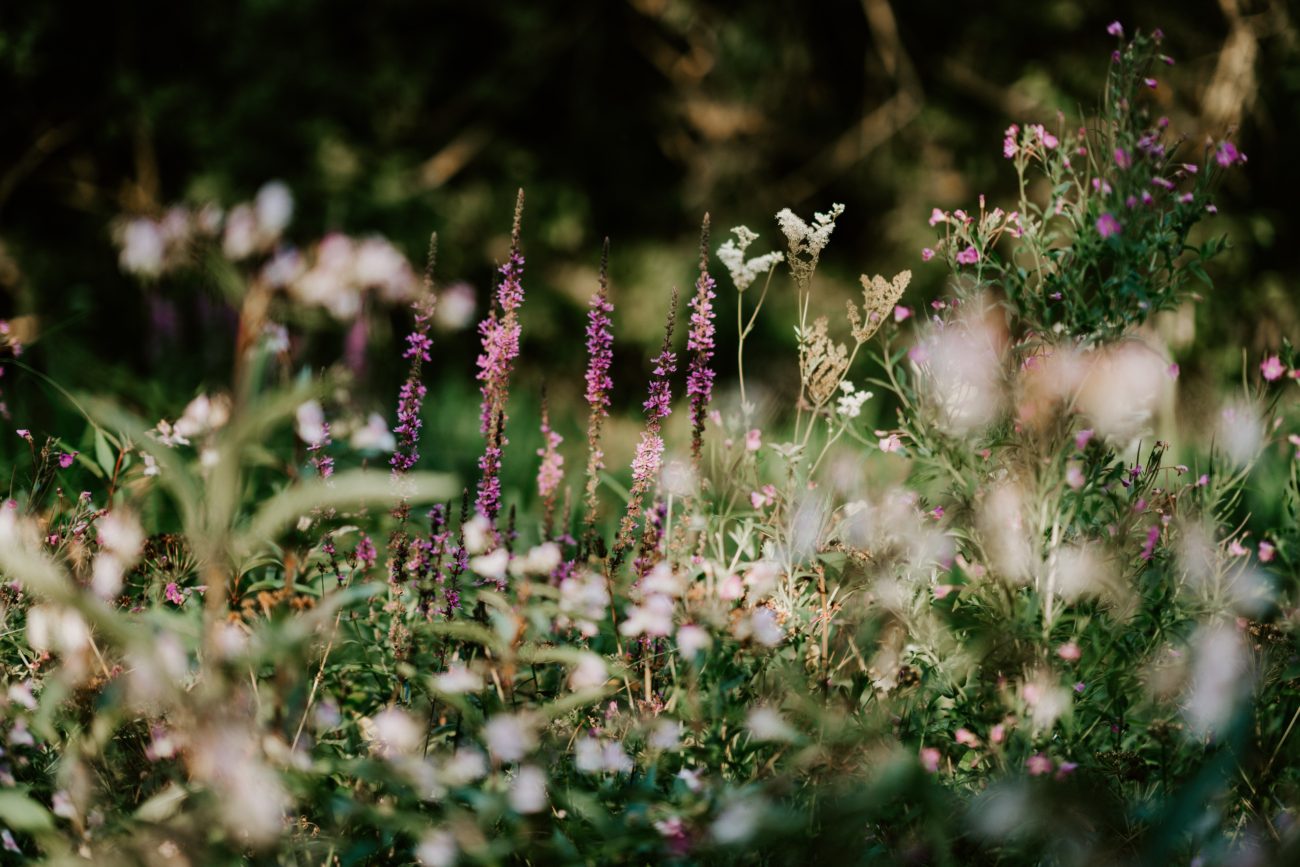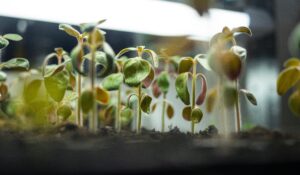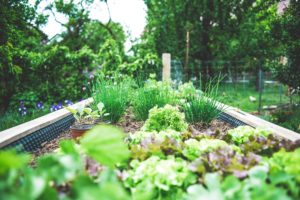- The Meaning of Critical Thinking: A Key Skill for Navigating Today’s Information Landscape - November 3, 2025
- Grandparents Can Develop Activist Grandchildren - September 29, 2025
- Top Six Reasons Credit Union Benefits Are a Smart Choice Over Banks - August 18, 2025
Last Updated on October 18, 2025
You can support the environment: landscape for yourself and the Earth.
Living a sustainable life means an outdoor perspective, too. In addition to a sustainable household and diet, you can also impact the environment in your landscape.
We have a significant impact on the Earth. The terms ‘sustainable’ and ‘green’ are related to our environmental impact and how to minimize it. Ideally, we would offset any adverse effects with positive actions.
Gardening can be an excellent way to offset our impact. And guess what? It’s good for you, too, because nature can heal you.
Support the Environment: Landscape Ideas to Delight You and Wildlife
In this post, I describe four ways you can make a difference.
- Supporting biodiversity
- Reducing your garden’s carbon footprint
- Reducing pollution
- Gardening for food
Do Your Part for Biodiversity

Supporting pollinators and wildlife is essential because of the loss of food and shelter that comes with development in our communities. We need to nurture the tiny ecosystem in our yard. Native plants, shelter, food, and water sources support beneficial insects, pollinators, and wildlife.
Transform your yard into a place to enjoy wildlife. Pollinator gardens can be beautiful. It is lovely to walk through your yard and hear birds singing, watch them splash in the birdbath, and hear the humming of bees as they flitter over your flowers. Besides bees and birds, my favorite wildlife sightings are owls, wild turkeys, turtles, and rabbits.
With a yard that operates as an ecosystem, you need fewer pesticides since the beneficial insects get rid of the invaders. Wildlife will help disperse native seeds.
Read More: How to Perform Lawn Care That Improves the Environment
Read More: Margaret Renkl’s “The Comfort of Crows” Is a Call to Action for the Earth
Reducing Your Garden’s Carbon Footprint
You’ve probably heard a lot about climate change. Humans’ use of fossil fuels has caused a rapid rise in the average global temperature. When they burn, they release greenhouse gases that trap the sun’s heat. The world is now about 1.2C warmer than it was in the 19th Century – and the amount of carbon dioxide in the atmosphere has risen by 50%.
Reducing your carbon footprint refers to ways you can make a difference in your use of fossil fuels. You can do that in many ways. For example, traveling less, adjusting your thermostat, and reducing your consumption of goods.
You can also impact the environment with landscape that reduces our carbon footprint. Here’s how.
Tending Your Lawn

If you still have some lawn, consider other ways to maintain it that use fewer fossil fuels. For example, keeping your lawn cut higher means you don’t have to mow as much. And a side benefit is that your grass will be happier, developing longer roots that hold water in the soil better.
Another opportunity to reduce fossil fuel use is a reel mower with no engine. (We have one, and it works okay if the grass isn’t too high.) Other options include electric or battery-powered mowers and tools.
Handling Your Garden Wastes
One major source of greenhouse gases is yard waste sent to the landfill. Use your waste for good instead! Transform your household waste into rich compost for your garden.
Our large maples provide a glorious red show in the autumn and shed their leaves all over our yard. If we rake them to the street, our city will come by and vacuum them up. Instead, we consider the leaves a fantastic source of fertilizer. We rake them into a pile, providing shelter for insects and wildlife over the winter. Then in the spring, we mulch the leaves to use on our garden beds.
I also bag up leaves and let them sit for a year. The result is glorious leaf mold that is a fantastic fertilizer.
Mulch your grass instead of bagging the clippings. This helps your soil.
Burying the Carbon Dioxide

Plant Trees
Trees sequester carbon for us. Plant more trees. And place your trees so they shade your house during summer, which decreases your energy consumption.
Compost Your Waste
While trees are perfect for carbon sequestration, you can also sequester carbon by composting. And, of course, you’ll have an excellent addition to your garden soil that will reduce pests and clean up toxins.
Read more about the various ways to compost: How to Use Your Stuff to Make the World a Better Place
Learn about the easiest way to compost – heaving everything into a pile: How to Make Your Garden Healthy Using the Easiest Eco-Friendly Way to Compost
I have worms in my house: Worms in Your House? How To Embrace Vermicomposting and Receive Glorious Fertilizer in Return
Reducing Pollution
A traditional grass yard lends itself to many ways to pollute the environment. Maintaining a typical lawn means watering, fertilizing, and mowing. In addition to reducing air pollution caused by mowers, you can keep the water system and your soil healthier.
Water Pollution and Conservation

If you live on a lake or a stream, plant a gorgeous plant barrier on the water’s edge.
Capture the rainwater from your roof in a rain barrel for irrigation.
Mulching means less water runoff and less weeding. Try a 3-inch layer of eco-friendly mulch on unplanted surfaces.
Soil Pollution
Your soil supports your yard and vegetable garden. So make sure it is healthy. Your local extension office will test your soil so you can fertilize it appropriately. Using non-toxic fertilizers helps protect the good critters in your soil. And you can fertilize with the waste from your household.
Support the Environment: Landscape for Food
Using part of your yard for a food garden has many advantages for a sustainable life.
- Enjoy better health
- Protect our food supply
- Reduce your carbon footprint
Enjoy Better Health
A diet rich in vegetables and fruit is a healthy diet. Add to that eating produce that is organic, and you’ve made a difference for yourself and the environment.
Read More: Sustainable Diets: How To Make a Difference for the Planet
Read More: How to Get Started in Vegan Permaculture
Protect the Food Supply

Seed savers cultivate heirlooms over generations. On the other hand, manufacturers breed hybrids for specific characteristics, which means they can, for example, be resistant to disease. However, companies patent hybrids to protect their profit, and in some cases, saving seeds would not work because the next generation is not true to the first.
Another issue is that producers breed hybrids for shipping. Instead of choosing flavorful plants, companies select plants that won’t spoil when sending them to faraway places takes a long time. That is why the tomatoes you buy in the winter have no taste.
By choosing heirloom plants and saving their seeds, you make a positive impact on our environment. You are:
- Increasing biodiversity by saving native plant seeds,
- supporting seed availability,
- better adapting varieties to your area, which require less care, and,
- preserving food heritage.
When the U.S government sent the Cherokee Nation to Oklahoma on the Trail of Tears, the Nation preserved its heritage by sewing seeds into their clothing. As a result, I’m growing one of their bean varieties in my garden.
I enjoy growing fruits and vegetables, but you may be unable to. Instead, support your local organic farmers.
Read More: How to Save the World by Saving Seeds
Nurture Yourself

- stress reduction
- better mood
- increased ability to concentrate
- post-traumatic stress disorder relief
- fewer illnesses
- enhanced immunity
- better energy
- better sleep
- lower blood pressure
- less inflammation
- increased longevity
- better recovery from surgery or illness
- better athletic performance
That is a spectacular list.
Read more: Eye-Opening Ways Nature’s Sounds, Smells, and Sights Can Heal You
Support the Environment: Landscape Ideas to Delight You and Wildlife
How To Get Started
I started reducing the size of my lawn, composting, and making my little part of the world more wildlife-friendly. I even received a Certified Wildlife Habitat from the National Wildlife Federation.
Then I learned about a program in my state of Tennessee focused on lawn care that prioritizes a balance between what people want from their yard and what the environment needs to be healthy. In Tennessee, this is called a ‘smart yard.’
There are many programs, such as Tennessee Smart Yards, across the country. Each area has different challenges, of course. For example, water management may be a more significant focus in the desert. But following the program suggestions means keeping your yard and surrounding areas ecologically sound.
Transforming your yard will be an ongoing process unless you have a lot of time and money. Start by listing your goals, and then take them one at a time. Technology can help your planning.
Start by reducing the size of your lawn. By removing sections of your lawn and replacing them with native plantings, you can achieve several eco-friendly goals: reducing water use and runoff, minimizing air pollution associated with mowers and trimmers, reducing the need for fertilizers, and increasing visits from pollinators and songbirds.
And you add to the value of your landscape. Eco-friendly landscaping can be gorgeous.
Your local Master Gardeners can provide assistance tailored to your community’s needs. They can recommend native plants, help you plan changes to your yard, and recommend ways to create a gorgeous yard that nurtures the environment. Call your local extension office for information.
Be a Steward

You can be a role model for your neighbors, children, and grandchildren.
READ NEXT
One of my most popular posts in the summer: How To Make a Harvest Bag.
How To Encourage Community Gardening in the City




Pingback: Sustainable Diets: How To Make a Difference for the Planet
Pingback: How to Perform Lawn Care That Improves the Environment
Pingback: Worms in Your House? How To Embrace Vermicomposting and Receive Glorious Fertilizer in Return
Pingback: How To Make a Harvest Bag
Pingback: At the Intersection of Gardening and Technology
Pingback: Eye-Opening Ways Nature's Sounds, Smells, and Sights Can Heal You
Pingback: How To Increase Vegan Options in Your Hometown